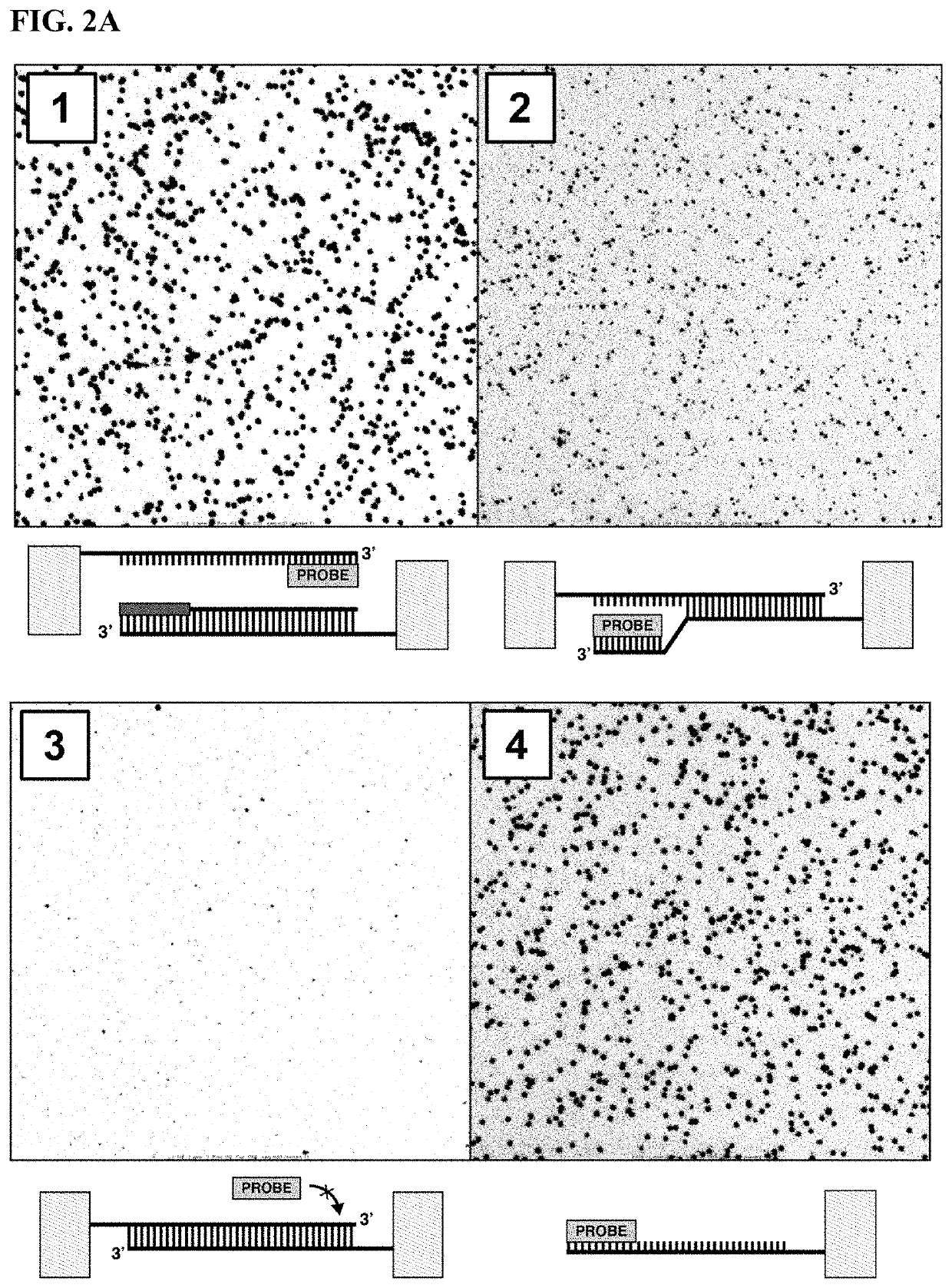Methods and compositions for sequencing complementary polynucleotides
a complementary polynucleotide and composition technology, applied in the field of methods and compositions for sequencing complementary polynucleotides, can solve the problems of requiring specialized equipment and expertise, requiring specialized equipment and equipment, and the effort to sequence and assemble genomes using the sanger method are expensive and laborious, so as to reduce the amount of nucleic acid manipulation and duplication, reduce the risk of polymerase errors, and increase the fidelity and accuracy of high throughput sequencing
- Summary
- Abstract
- Description
- Claims
- Application Information
AI Technical Summary
Benefits of technology
Problems solved by technology
Method used
Image
Examples
embodiments
P-EMBODIMENTS
[0239]The present disclosure provides the following illustrative embodiments.
[0240]Embodiment P1. A method of sequencing a template polynucleotide, the method comprising: (A) generating a double-stranded amplification product comprising a first strand hybridized to a second strand, wherein (i) the double-stranded amplification product comprises the template polynucleotide or complement thereof, and (ii) the first strand and second strand are both attached to a solid support; (B) generating a first invasion strand hybridized to the second strand by hybridizing an invasion primer to the second strand, and extending the invasion primer, wherein the invasion primer is not covalently attached to the solid support; and (C) generating a first sequencing read by hybridizing one or more sequencing primers to the first strand, and extending the one or more first sequencing primers.
[0241]Embodiment P2. The method of Embodiment P1, wherein the first strand is covalently attached to...
example 1
ent Approach to Sequencing Two Strands of the Same Polynucleotide
[0354]Before a target nucleic acid is sequenced, some degree of DNA pre-processing and converting it to a library molecule is typically required. For example, these steps may involve fragmenting input polynucleotides into an appropriate platform-specific size range, followed by an end-polishing step to generate blunt-ended DNA fragments. Common nucleic acid sequences (referred to as adapter sequences) on the 3′ and 5′ ends are then ligated to these fragments. A functional library molecule typically includes the target molecule with specific adapter sequences added to the 3′ and 5′ ends, e.g., Illumina's P5 and P7 adapters / primers, to ensure compatibility with the underlying flow cell, so it may be amplified appropriately. For example, typical platform primers include 5′-AATGATACGGCGACCACCG (P5) (SEQ ID NO:34), or the complement thereof, and 5′-CAAGCAGAAGACGGCATACGA (P7) (SEQ ID NO:60), or the complement thereof. An exa...
example 2
in Invasion Primers
[0370]Peptide nucleic acids (PNAs) can be used as invasion oligonucleotides in another example of this invention; see the schematic illustrated in FIGS. 4A-4B. Peptide nucleic acids consist of a pseudopeptide backbone, which has been shown to be capable of invading dsDNA. MiniPEG-γPNAs are particularly beneficial because they have better water solubility (Bahal et al. ChemBioChem, 13(1), 56-60). PNAs typically do not have a 3′-OH that is extendible by a DNA polymerase, though one can consider PNA-DNA chimeras that have 3-7 bp of canonical DNA nucleotides at the 3′ end of the oligonucleotide to be extendable by a DNA polymerase. MiniPEG-γPNAs can be designed to invade into dsDNA clusters by targeting a sequence region in the common adapter sequence of all clusters. PNAs can be designed for strand invasion into any part of the common adapter sequences, but targeting near the 5′ end of one of the amplicons is beneficial because it renders the complementary strand ava...
PUM
| Property | Measurement | Unit |
|---|---|---|
| ionic strength | aaaaa | aaaaa |
| Tm | aaaaa | aaaaa |
| Tm | aaaaa | aaaaa |
Abstract
Description
Claims
Application Information
 Login to View More
Login to View More - R&D
- Intellectual Property
- Life Sciences
- Materials
- Tech Scout
- Unparalleled Data Quality
- Higher Quality Content
- 60% Fewer Hallucinations
Browse by: Latest US Patents, China's latest patents, Technical Efficacy Thesaurus, Application Domain, Technology Topic, Popular Technical Reports.
© 2025 PatSnap. All rights reserved.Legal|Privacy policy|Modern Slavery Act Transparency Statement|Sitemap|About US| Contact US: help@patsnap.com



